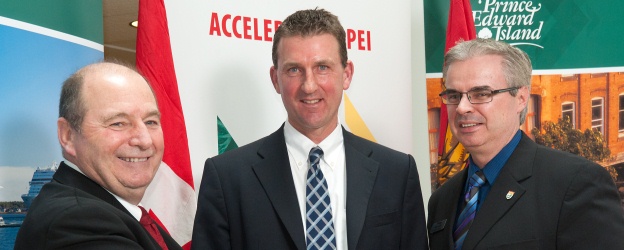TORONTO – Things are about to change dramatically at SAP Canada regarding its channel direction.
In an exclusive interview with CDN, SAP Canada COO Leagh Turner said the ERP powerhouse is doing some serious thinking about how it wants to go to market with channel partners along with how it wants to managed its indirect business going forward.
It’s important to note as you read this story that SAP Canada has not set forth any official plan for its channel. “We are still contemplated what we are going to do. We are not ready to launch,” Turner told CDN.
One of the more telling statements Turner made during this interview: “The definition of insanity is doing the same thing over-and-over again and expecting a different result.” This statement indicates the scope of the changes the Canadian subsidiary is interested in making. Its clear SAP Canada wants to pivot away from its current channel direction and is interested in growing its base of partners from under 40 to well over 100.
How will SAP Canada attempt to do this? Turner said the company is seriously considering increasing the cost of sale burden and placing it directly on their own shoulders. What this will actually look like to a partner is still being worked out.
“In a market where our partners should be capturing more revenue that is what we are seeing today. There are good business reasons to do this and we believe it can get us new business traction,” she said.
The long term goal of these changes is to have a better, self-sufficient partner model, but for now they are looking to team with partners who want to take the journey with SAP. No time line has been drawn up for these changes. No launch date has been set, either. Turner and the channel team are in the midst of doing a lot of contemplating. She told CDN it will take a few more months to get this new support model ready for launch.
The investment to support this new direction is in place currently. SAP Canada plans to work in this new model with the same amount of people. However, more resources from the direct accounts team will be brought in for channel support.
“We are still trying to figure out the right line. Where should that be in SAP and within the SME?” Right now SAP is operating under the plan where if a company has more than a billion dollars in revenue it will be handled directly. Everything under that is up for grabs for the channel.
Turner wants to drop that billion-dollar threshold down to $500 or $600 million.
“When SAP was primary on ECC (Enterprise Central Component) partners around Canada were great at selling the whole thing and enabling that portfolio. But over the last seven years SAP has acquired Concur, Ariba, Fieldglass, SuccessFactors and Sybase. The reality now is that the bulk of the partners can’t articulate the full scope of the potential. We have changed too much in direction and the channel… has to keep up for the channel to be profitable,” she said.
So with the acquisitions behind them now, Turner is leaning towards implementing a new channel support structure that is more segmented. That could look like three to four key partners focusing on SuccessFactors only and then another four to five partners who just do Ariba. Possibly something broader for the Concur line.
Turner confirmed to CDN this strategy will mean a dramatic increase in the number of solution provider partners SAP Canada will work with.
“We have diversified but our channel has not yet diversified,” Turner added.
But before SAP’s channel network grows, Turner and the channel team will first have a lot of conversations with existing partners in terms of supporting them and helping them diversify their portfolio.
“We are not taking away from Peter to pay Paul. The goal is to be really surgical. We want to make sure they are the best enabled partners available. We are not going to ask them to be across the portfolio partners; that’s impossible,” she said.
Canadian realities
Turner admitted that the Canadian operation and to a certain degree the entire company has not adapted well with the channel. There are two factors that have made this quite challenging for SAP in Canada. The first is that there are few billion dollars’ enterprises in the country and the second factor is that the under a billion dollars’ market is the fastest growing area.
“What’s most interesting about this market is that they are consuming technology for the purpose of change. They are defining that path to acquisition and growth. They are hungry for technology,” Turner said, describing this market.
While Turner accepts there is massive disruption occurring in the marketplace she refused to use that as an excuse saying that SAP has – over the course of the last five years or so – changed its strategy to support customers who are wrestling with this massive disruption. But still the company has not done a great job in support of its channel in terms of how they support these types of customers.
She added that the Canadian operation could have done a better job in helping the channel partners to adopt these new directions.
One-way Turner is leaning towards is to “dramatically” increase the support and investment for the channel. “And, by that I mean leverage Canadian resources in pre-sales, marketing and communications, and internal management consultancy to help the channel better understand what we are doing,” she said.
One of the issues Turner and the SAP operation is currently dealing with is that they have operated in a traditional way with the channel. The Canadian subsidiary basically assumed all of its channel partners were self-sufficient and beyond enablement they worked independently.
“The reality is with massive market changes and changes being made within the partners themselves, SAP is asking a lot of these channel partners. So we are considering applying more resources in support of them to help them through this chiasm,” Turner said.
Channel chief
While Turner did not confirm the company will move forward without a person in the channel chief role, she did not deny it either.
She said it’s reasonable for one person to see across the market, but it’s also reasonable to have a small group manage the channel engagements in a segmented way.
Distributors
Again they are a consideration for Turner, but more contemplation is needed. She did say that they can be part of a broader strategy and an avenue to reach untapped routes to market. “We need to apply more focus here and we know that,” she said.






